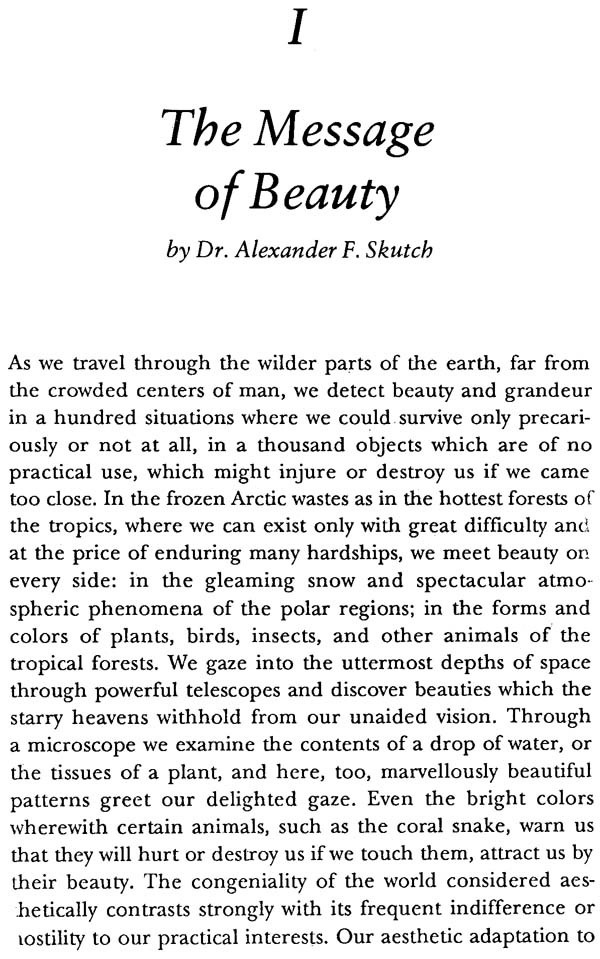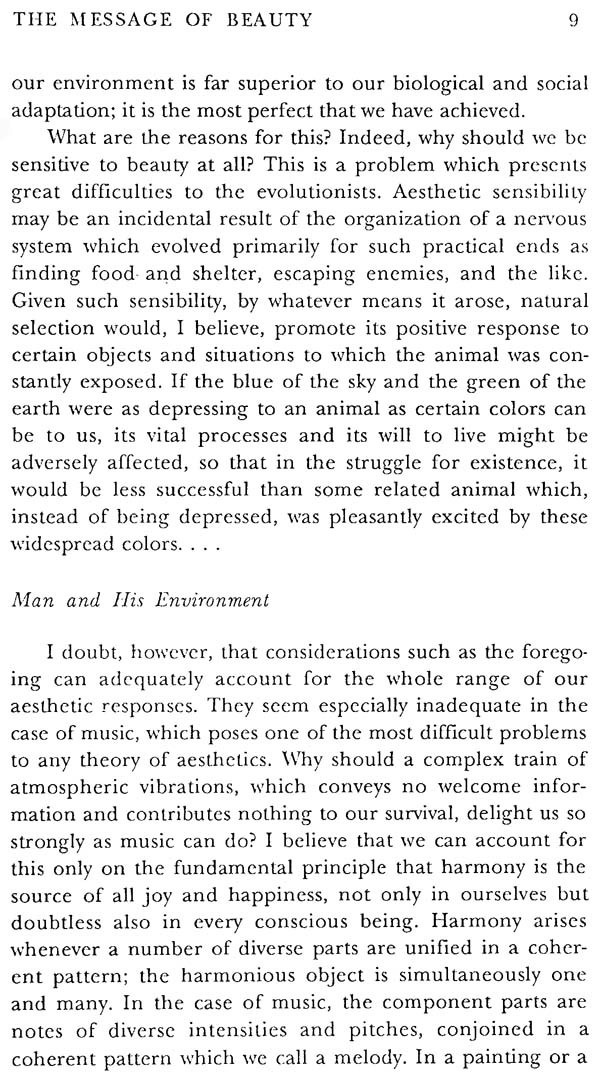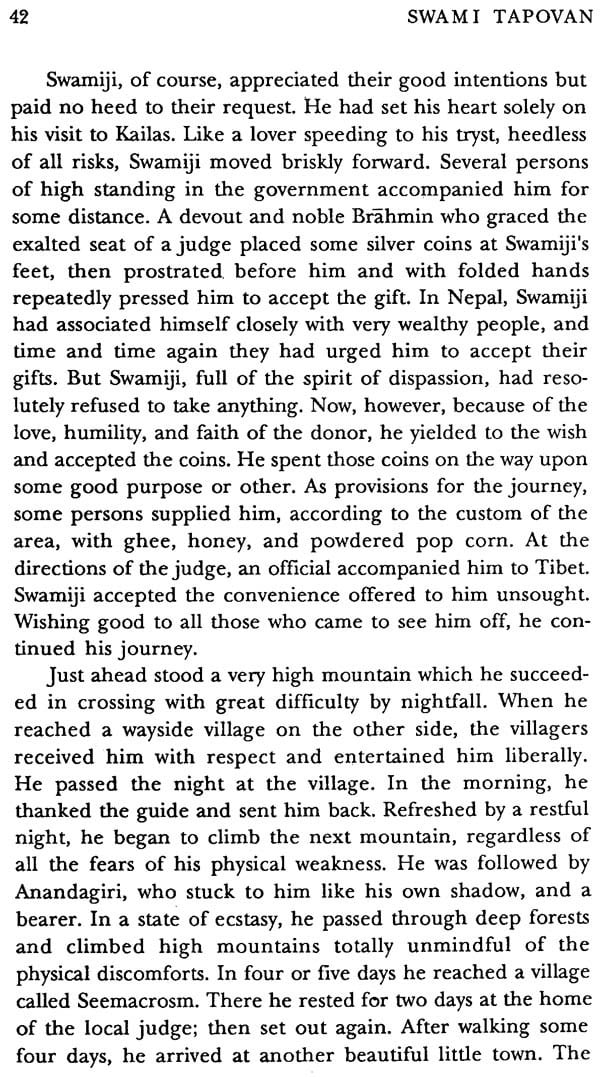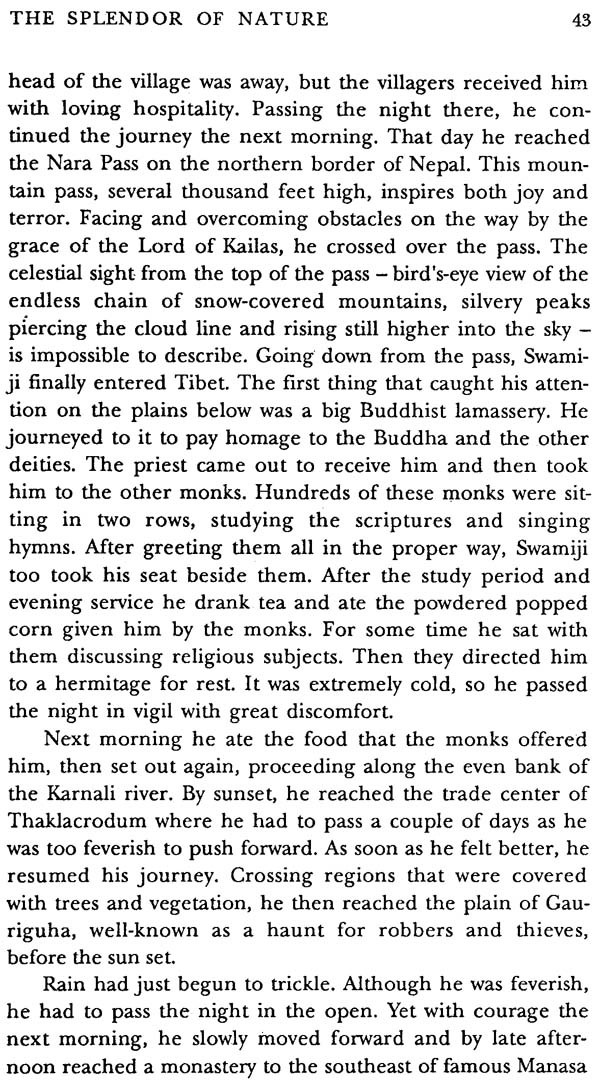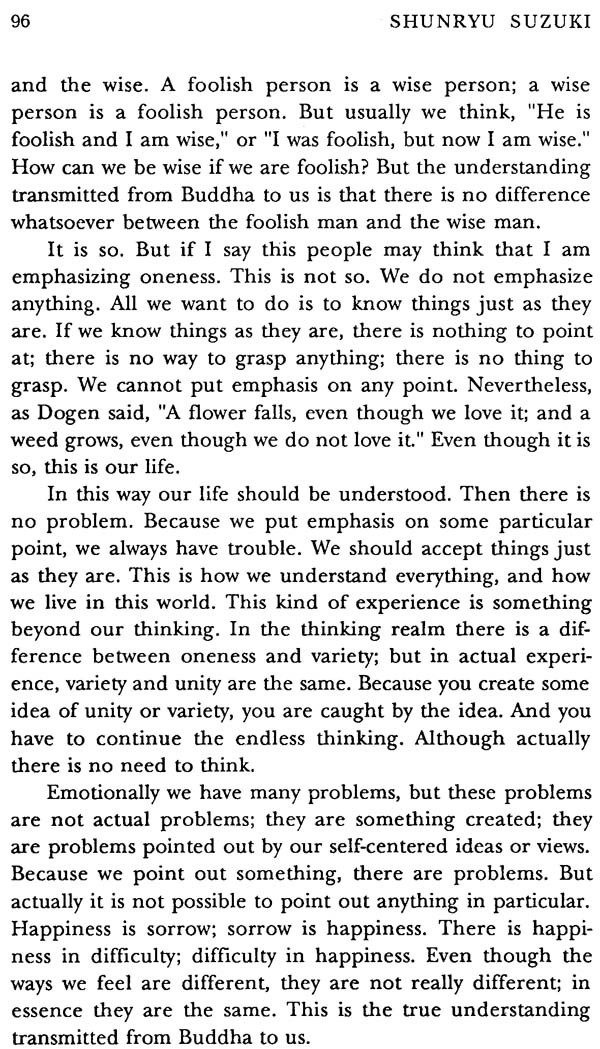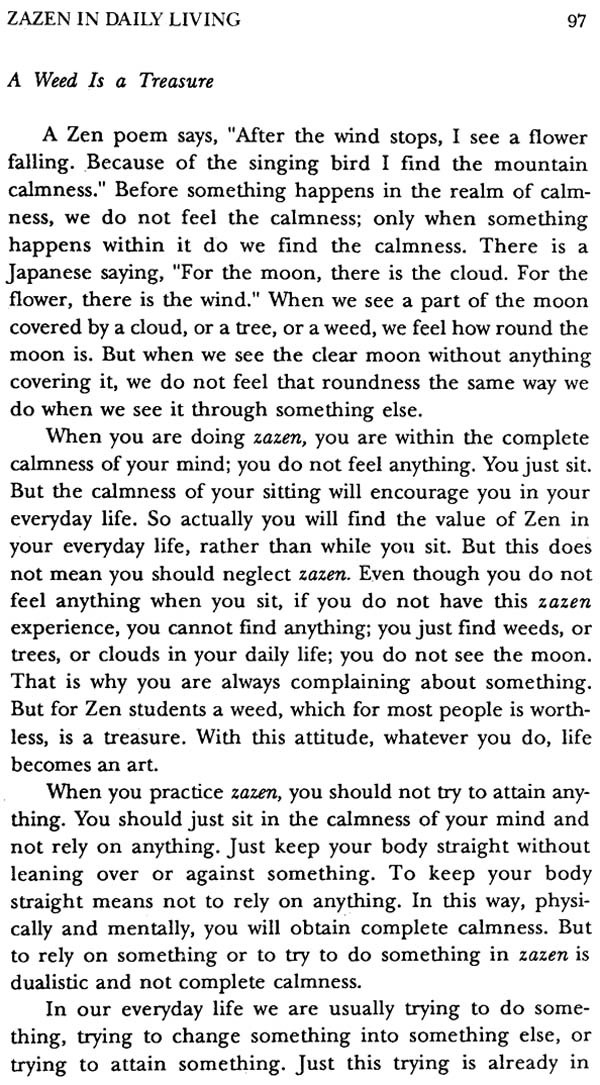
Harmony and Beauty in Man and His World
Book Specification
| Item Code: | IDJ594 |
| Author: | Martin Oudejans |
| Publisher: | Central Chinmaya Mission Trust |
| Language: | English |
| Edition: | 2006 |
| ISBN: | 9788175973695 |
| Pages: | 106 (2 B/W Illustrations) |
| Cover: | Paperback |
| Other Details | 8.5 inch X 5.5 inch |
| Weight | 130 gm |
Book Description
Earliest man was dependent on bountiful Mother Earth to provide his food and shelter for survival; therefore, he began to observe her daily rhythms and cycles of seasons, along with the reoccurring heavenly phenomena. To the different manifestations he gave names of the gods and worshipped them as servants of a greater, unknowable God. Many of those gods remain with us today in our universal religious symbols: the mountain as the ascent to the Divine, the river as the flow of life, water as a cleansing agent, and the wind as the holy spirit. Living in harmony with the natural creation and all creatures, man discovered a harmony, connection, and unity with the wonderful world. Further, the enormous diversity of living and material forms inspired awe man began to look for a cause, or creator, for the diversity.
Harmony and beauty go together. The problem arises when scientists try to discover harmony in the laws of nature without talking in account the beauty of the parts and their unity. While modern man tears nature apart to discover its secrets - the cycles of growth, the mutual interdependence of plants and animals - the ancients explored the phenomena of harmony and beauty in their world by going inside their own inner being to discover the greatest mystery of all: God, man, and the world are one.
To reach a comprehensive explanation of nature in relation to man in this issue, we begin our investigation of harmony and beauty with a reviews by Alexander Skutch of their definitions. He postulates that harmony can only exist where there is unity of the parts. He further concludes that beauty is necessary for the spiritual evolution of man, for it is because of the beauty of creation that man is inspired to investigate its nature and thus discover the underlying goodness and unity. Rabindranath Tagore investigates man's relation to nature and attributes Western man's self-centeredness to his disharmony with nature. He contrasts this attitude with the way of life in Vedic India which has molded the mind of the people there. Part one concludes with a conversation between Albert Einstein and Rabindranath Tagore in which Tagore insists that beauty of the world and truth of divinity are in fact dependent on the existence the human being.
The great splendor and variety of natural beauty ever remind man of the greatness of the creator. When he closely observes the world, he becomes aware of a harmony and beauty within himself which seems a part of the very harmony and beauty of nature. Communion with nature can open a passage to his divine self, for it is often in quiet meditation in solitary natural settings that man meets the Divine. When he does so he experiences a new level of connection with all of nature's aspect: the elements and their interplay. In Part two three great lovers of nature - Ralph Waldo Emerson, Henry David Thoreau, and Swami Tapovan - share some of their thoughts, experiences, and appreciation for our beautiful planet Earth.
Part Three treats the relationship of the many, diverse phenomena of the world with the one essential reality. The Upanisads continually extol God as the sole reality. When in a natural setting we behold the wonder of our world we intuitively affirm that all of this is God, but the problem comes when we try to understand how God is all of this. In the third chapter, G. de Purucker examines how the many aspects of the world contribute to the mutual interdependence and cooperation of all things. Many misunderstand that the point of view that all of this is an expression of God means that no emphasis is to be laid on the world; however, Collum asserts that in fact a belief in the unity of the world necessitates a compassion for our fellow sojourners and an ultimatum that we must work in harmony with all. Then, using selections from the seventh and ninth chapters of the Bhagavad Gita, Swami Chinmayananda explains the great secret of how the One is also the many manifestations. In fact it is only because of this one underlying Reality in and through all things and beings that there is a mutual cooperation possible in the world.
The native American Indian had such a confidence in the unity of man, nature, and God that they went to nature to seek wisdom for the welfare of their people and spiritual understanding for themselves. This tradition is reminiscent of the quest for truth of Satyakama of the Chandogya Upanisad. While out tending cattle for his guru, the student obtained such an absorption into the totality of Nature that he was taught the knowledge of the four parts of Brahama (the creator) by fire and three animals: a bull, swan, and diver-bird. When Satyakama returned to his guru, the teacher questioned him, "Verily, my son, you shine like a knower of Brahma. Who, pray tell, has instructed you" "Those other than man" the student honestly replied.
The fourth section begins with an account, given by the Sioux holy man Black Elk, of a ritual in which a "lamenter" asks for a message from nature to his people in their attempt to live in harmony with the Great Spirit. The subject of living in harmony in the world is further explored by the Christian theologian, Dr. Jeremy Taylor, and the Buddhist master, Shunryu Suzuki, Swami Chinmaynanda completes the subject with an overview of the dynamics of living a life of harmony and poise in the world around us to ultimately being us to the experience of oneness with of creation.
Harmony and Beauty
The Vedic songs of ancient India extol again and again the wonder of wonders Man, Creation, and God are One. Both the creation and man come from one great source. The harmony and beauty of the creation is an indicator of this highly skilled, intelligent, creative orchestrator. In the wonder of nature, man not only experiences in the wonder of nature, man not only experience a beauty in himself, but also a harmony with the oneness of the entire creation.
In an attempt to reach a comprehensive understanding of man in relation to the harmony and beauty, the subject is divided into four sections.
Man and His World: The unique role harmony and beauty plan in man's relationship with the world to bring him to a deeper understanding of his own innate nature.
Reflections on Nature: Personal experiences of persons who have gone to natural places to partake the wonder of nature's beauty and realize their place in the infinite unity beyond the world of natural necessities.
The Unity in Diversity: Describes the One behind the many that includes all of the seeming diversity of the world, yet remains ever whole.
Harmony in Living: Techniques and thoughts on bringing the harmony.
| Preface | 1 | |
| PART ONE MAN AND HIS WORLD |
||
| I | The message of Beauty | 8 |
| by Dr. Alexander F. Skutch | ||
| Man and His Environment | 9 | |
| The Role of Beauty in Evolution | 11 | |
| The World Process | 12 | |
| II | The Relation of the Individual and the Universe | 16 |
| by Rabindranath Tagore | ||
| Man's Kinship with Nature | 17 | |
| Fundamental Unity of Creation | 18 | |
| Power of Union | 20 | |
| III | On the Nature of Reality | 23 |
| by Rabindranath Tagore | ||
| Truth, Harmony and Beauty | 24 | |
| The Value of Truth | 25 | |
REFLECTIONS ON NATURE |
||
| IV | Nature and Beauty | 32 |
| by Ralph Waldo Emerson | ||
| Harmony of Man and Nature | 33 | |
| The Love of Beauty | 35 | |
| V | The Splendor of Nature | 38 |
| by Swami Tapovan | ||
| Glory of the Divine Himalayas | 38 | |
| Kindness of the Villagers | 41 | |
| The Celestial Mountain | 44 | |
| VI | At Walden Pond | 47 |
| by Henry David Thoreau | ||
| Morning and Wakefulness | 47 | |
| Evening Tike | 50 | |
| Fulfillment in Solitude | 52 | |
| PART THREE THE UNITY IN DIVERSITY |
||
| VII | The Harmony in Diversity | 58 |
| by G. de Purucker | ||
| All Things Contribute to All Things | 59 | |
| Unity in Cooperation | 61 | |
| VIII | The Divine Pattern of Harmony | 63 |
| by Collum | ||
| Divine Compassion and Unity | 63 | |
| The Lost Ideal | 66 | |
| The Meaning of Individuality | 68 | |
| PART FOUR HARMONY IN LIVING |
||
| X | That We May Live | 82 |
| by Black Elk | ||
| The Preparation | 83 | |
| Reporting of a Vision | 84 | |
| XI | Practice of the Presence of God | 88 |
| by Jeremy Taylor, D. D. | ||
| Exercising this Practice | 89 | |
| Benefits of the Exercise | 91 | |
| XII | Zazen in Daily Living | 94 |
| by Shunryu Suzuki | ||
| Flowers and Weeds | 95 | |
| A Weed is a Treasure | 97 | |
| XIII | A Life of Harmony and Poise | 99 |
| by Swami Chinmayananda | ||
| A Vision of Totality | 99 | |
| The Cooperative Spirit | 101 | |
| Culmination of Evolution | 102 | |
| The Experience of Oneness | 104 |
